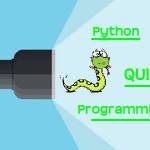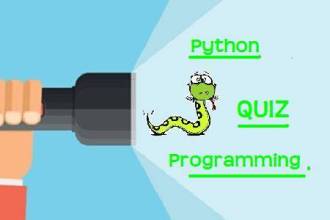If you are a Python geek, then you would love to attempt this Python multithreading quiz. We’ve prepared twenty questions that cover various aspects of threads in Python. We composed this test for both programmers and test automation developers who practice Python for development.
Multithreading is an essential feature to learn for any programmer or a tester using Python. Because a test automation developer can use it to write multithreaded testing tools to run a large number of test cases in parallel. Whereas, a developer needs to know it to produce optimized and scalable applications.
So all of you should try this quiz and test your knowledge of the subject. We’ve added all the important Python multithreading questions in this quiz and tried to make it as useful as it could be. Just for the information of our readers, we promise to come up with new quizzes and will also update the old ones as well.
Attempt Python Multithreading Quiz
Note: You can find all the answers to this Python multithreading quiz at the end. To learn more about Python multithreading, check out more tutorials on our blog.
Answer Key and Reasoning
Here is a reasoning table that briefly explains the correct answers for each question.
| Q# | Correct Answer(s) | Reasoning |
|---|---|---|
| 1 | thread, threading | Python provides both thread (deprecated) and threading modules for managing threads. |
| 2 | thread | The thread module allows running functions in separate threads. However, threading is preferred in modern Python. |
| 3 | GIL | Python’s Global Interpreter Lock (GIL) prevents multiple native threads from running Python bytecode simultaneously, limiting true parallel execution. |
| 4 | isAlive() | The isAlive() method checks whether a thread is still running. It has been replaced with is_alive() in Python 3. |
| 5 | Thread.start() | The start() method properly initiates a thread’s execution, whereas calling run() directly does not start it as a separate thread. |
| 6 | getName() | The getName() method retrieves the name of a thread, useful for debugging and thread tracking. |
| 7 | thread.stop() & thread.wait() | Threads do not have a built-in stop() method. Instead, we use event flags or wait mechanisms to control execution safely. |
| 8 | join() | The join() method makes the calling thread wait until the specified thread finishes execution. |
| 9 | Lock allows one owner; RLock supports reentrant locking | A Lock allows only one acquire at a time, whereas RLock lets the same thread acquire it multiple times without deadlock. |
| 10 | Locked, Unlocked | A Lock object has two states: Locked (acquired) and Unlocked (released). |
| 11 | Locked, Unlocked, Recursion level, Owning thread | An RLock tracks not just lock state but also the recursion level (times acquired by the same thread) and the owning thread. |
| 12 | If owned, acquire() increases recursion level, If another owns, acquire() blocks | RLock allows the same thread to acquire it multiple times, increasing recursion level. If another thread owns it, acquire() blocks. |
| 13 | RLock | A RLock (Reentrant Lock) allows a thread to acquire the lock multiple times without deadlock. |
| 14 | enumerate() | The enumerate() method returns a list of all active threads. |
| 15 | May degrade performance | On a single-core CPU, multiple threads compete for CPU time, which can lead to context switching overhead, potentially reducing performance. |
| 16 | Lock, RLock | A Condition object needs to be associated with a Lock or RLock for synchronization. |
| 17 | notifyAll() | notifyAll() wakes all threads waiting on the condition, whereas notify() wakes only one. |
| 18 | RuntimeError | RuntimeError occurs when an operation is performed in an invalid state (e.g., releasing an unacquired lock). |
| 19 | BoundedSemaphore limits max value | Unlike a regular Semaphore, a BoundedSemaphore prevents exceeding the maximum initial value, making it safer for tracking resources. |
| 20 | Semaphore | A Semaphore controls access to a shared resource with a limited number of slots, making it ideal for managing concurrent access. |
This concise yet informative table gives a clear and quick explanation of why each answer is correct.
Key Takeaways from Python Multithreading Quiz
Before you leave, we like to share that there are many interesting tutorials, and quizzes available on our blog. Any software developers or test engineers can refer them. They will surely benefit from our experience. We always write on relevant topics that are useful for our readers. You can also tell us about your area of interest or share any suggestions for us to do better.
1. A-Z of Python Multithreading Concepts – Must Read
2. Learn Special Python Coding Tips from Expert
3. Crack Python Interview – Read this
We hope that this quiz will assist software developers in improving their overall Python programming skills.
Next, we expect that all software developers and QA engineers will have fun running through the quiz and appreciate us bringing out this blog post publically.
Lastly, our site needs your support to remain free. Share this post on social media (Linkedin/Twitter) if you gained some knowledge from this tutorial.
Enjoy Coding,
TechBeamers





